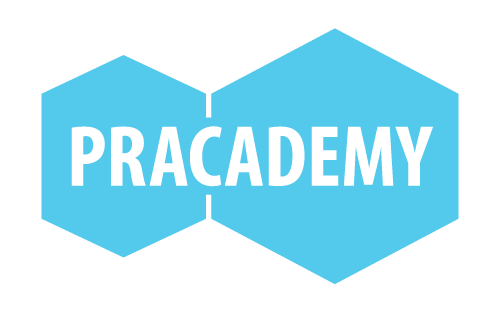TMM4220
Innovation by Design Thinking:
A Cross-Disciplinary Course
@ the Norwegian University of Science and Technology
Recommended Reading
Course Contacts
Federico Lozano: fede@pracademy.co (this is the only email I check regularly), 48368583
Aksel Sundal: aksel.sundal@ntnu.no, 47326677
Amanda Tuyen: amanda.truyen@ntnu.no, 91690526
Christopher-Robin: crvaksda@stud.ntnu.no, 90169314
Leo Gimre: leo.gimre@ntnu.no, 95852839
Ongoing Schedule, Updated
Demo Day Message
Pre-Sensemaking Message
Needsfinding Message
Class 1
Class 2
Class 3
Class 4
Class 5
Important Notes
This course cannot be taken remotely. Your physical presence is required.
We only issue Pass or Fail grades.
Course Description
In this course, student teams will tackle important design challenges, which they themselves will identify by using the design thinking methodology. Below are the main building blocks of design thinking, which we will learn through a highly active, collaborative, hands-on learning environment:
Empathy
As design thinkers, we begin by focusing on the human experience. We understand that the most impactful innovations are those that address important human needs in meaningful ways. To understand these needs, we adopt a deeply empathic perspective by standing in the shoes of others, and experiencing life from their perspective. This is not new, however. Anthropologists have been doing this for generations. Design thinking simply relays this powerful approach to address the challenges of modern-day organizations.
Fail early to succeed sooner
Design thinkers embrace iterations by building rough and rapid prototypes, and testing them early on. At first this can feel chaotic and risky. Design thinkers quickly adopt trial and error, and value the immediate feedback that it provides. We're open to small, early failures, which eventually pave the way to success. We don't, however, think that failure is fun. That would be disingenuous. All we do is train ourselves—and our teams—to embrace failure for the learning opportunity that it really is.
Block Busting
Design thinkers understand that with the right approach, our minds can become boundless. Quite often, however, the flow of creative ideas becomes obstructed by social constructs, self-imposed limitations, and personal biases, which we inevitably adopt as we grow older. Design thinkers learn to break these mental blocks by deferring judgement, letting go of unhelpful preconceptions, building on the ideas of others, and bringing deep awareness to everything that we do.
Q's Over A's
Design thinkers focus more on asking the right questions than coming up with the right answers. This is because the goal of design is not to discover an existing truth through traditional analytical thinking. That's the role of science. Instead, design thinkers seek to invent the future through synthesis. And because there is no single 'right future,' but instead many 'possible futures,' asking the right questions helps us explore multiple possibilities—eventually honing in on the most appropriate one.
Co-Concocting
Although some independent thinking can be good for idea generation, design thinkers recognize early on that meaningful, human-centered innovations can only flourish through socialization. Design thinkers constantly seek opportunities for radical collaboration and co-creation. It is through the cross-pollination of various ideas, perspectives, and approaches that the creative process flourishes. We leverage diversity in all its forms—gender, cultural, academic, professional—to break with the status quo.
Serious Playing
Designing and innovating is inherently ambiguous and messy. Design thinkers embrace this non-linearity and chaos through open-mindedness, flexibility, and a youthful sense of experimentation and play. We acknowledge that micromanaging the innovation process is not only futile, but also counterproductive. Design thinkers revel in uncertainty, improvise constantly, trust their gut feeling, and laugh a lot. We don't take ourselves too seriously, but we take what we do very seriously.
Course Content
This course is an immersive experience into Design Thinking - an empathy-based, human-centered, and rapid prototype-driven methodology for innovation. Design Thinking helps to tackle challenges such as the creation of new products, technological innovation, services, business models, experiences, processes and/or systems. The primary aim of the course is to empower students to ideate, launch, run, and successfully complete innovation projects that have a significant and meaningful impact on pioneering organizations and industries. The course encompasses intensive sessions on need finding, empathy, observation, immersion, ethnographic research, brain-/body-storming, ideation, and rapid prototyping - all in the context of tackling cutting-edge technological challenges and addressing strategic industry objectives. Our primary source of communication will be this course website. We will not be using Blackboard. For individual communication, we will use email.
Learning Outcomes
Knowledge: The students know how to approach innovation challenges from a human-centered perspective. They understand that the best innovations are usually the ones that address deep human needs, which point to meaning and the human experience. They acknowledge that a multidisciplinary approach to innovation is a powerful way to incorporate the perspectives of many different kinds of people, and that diversity is key to the development of continuous, and radical innovations. The students also uncover the importance of approaching innovation projects with a prototyping mind set, where iterations, trial and error, and even failure are all part of a valuable, creative learning process.
Skills:
The students are able to empathize with a broad group of stakeholders to understand their needs through the ethnographic method.
The students are able to define and re-define innovation challenges by asking the right questions, and not necessarily focusing on the right answers.
The students are able to develop many creative ideas through structured brainstorming sessions.
The students are able to develop rapid prototypes to bring their ideas into reality as quickly as possible, and obtain feedback.
General competence: The students, more broadly, gain a greater acceptance towards dealing with ambiguity and uncertainty in their professional and personal lives. They also learn to work with many different people in fast-paced, dynamic, cross-disciplinary team settings. Students also gain the competence to approach many different problems and challenges with an open, creative, empathetic, and prototype-driven mind set.


